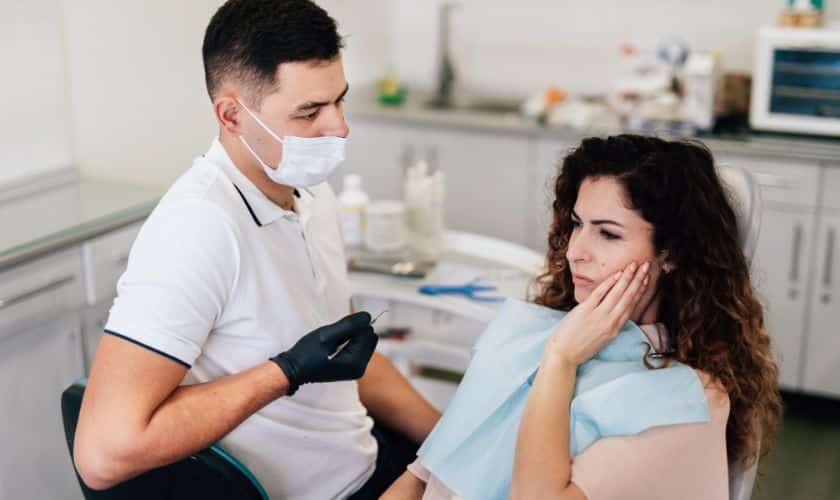Dental emergencies can occur unexpectedly, causing pain, discomfort, and potential damage to oral health. These emergencies often require immediate attention from a dental professional to address the issue and provide relief. Understanding what constitutes a dental emergency and knowing how to respond can significantly prevent further complications and preserve dental health. This informative guide will delve into the types of dental emergencies, the procedures involved in emergency dentistry, and what individuals can do when faced with a dental emergency.
What is Emergency Dentistry?
Emergency dentistry refers to the specialized field of dental care that addresses urgent oral health issues requiring immediate attention. It involves diagnosing, managing, and treating dental emergencies that may occur unexpectedly, causing severe pain, injury, or trauma to the teeth, gums, or surrounding oral tissues. Emergency dentists are trained to handle many dental emergencies, including toothaches, broken or knocked-out teeth, dental infections, and oral injuries. Prompt intervention in emergency dentistry aims to provide immediate relief, prevent further damage, and preserve oral health. Access to emergency dental services ensures that individuals receive timely and appropriate care during critical dental situations.

Types of Dental Emergencies:
1. Severe Toothache: Persistent and intense toothaches can indicate underlying dental problems such as tooth decay, infection, or an abscess.
2. Knocked-Out Tooth: When a tooth is completely dislodged from its socket due to trauma or injury, immediate dental attention is crucial to increase the chances of successful replantation.
3. Broken or Fractured Tooth: Teeth can break or fracture due to accidents, falls, or biting on hard objects. Depending on the severity, emergency dental treatment may be necessary to repair or extract the affected tooth.
4. Dental Abscess: An abscess is a pus-filled pocket that forms at the root of a tooth or in the gum tissue. It can cause severe pain, swelling, and even systemic infection, requiring immediate dental intervention.
5. Lost Dental Filling or Crown: If a dental filling or crown becomes dislodged or falls out, it can further expose the tooth to damage and sensitivity. Emergency dental care can address the issue and provide temporary or permanent restoration.
6. Soft Tissue Injuries: Lacerations, cuts, or tears to the lips, tongue, gums, or cheeks may occur due to accidents or trauma. Emergency dental treatment can help control bleeding, prevent infection, and promote healing.
7. Dental Trauma: Fractured jawbones, displaced teeth, or other facial injuries resulting from accidents or sports-related incidents require immediate dental care to ensure proper alignment and repair.
8. Dental Infections: Untreated dental infections can lead to severe pain, swelling, fever, and potentially life-threatening complications. Emergency dental treatment aims to alleviate pain, control the infection, and prevent its spread.
Procedures involved in Emergency Dentistry
- Examination and diagnosis of the dental emergency.
- Pain management techniques such as local anesthesia or pain medication.
- Dental imaging, including X-rays, to assess the extent of the emergency.
- Reimplantation of knocked-out teeth, if possible.
- Tooth extraction for severely damaged or irreparable teeth.
- Provision of temporary restorations to protect damaged teeth or fillings.
- Root canal treatment to address severe tooth decay or infection.
- Prescription of antibiotics to manage dental infections.
- Referral to dental specialists for specialized care, if needed.
What to Do in Times of Dental Emergencies:
- Stay calm and try to assess the severity of the situation.
- Contact an emergency dentist or dental clinic immediately for guidance.
- Control bleeding by applying gentle pressure to the affected area.
- Manage pain with over-the-counter pain relievers as directed.
- Preserve knocked-out teeth by keeping them moist in milk or saliva.
- Protect fractured teeth by rinsing the mouth with warm salt water and using a cold compress on the outside of the mouth to reduce swelling.
- Avoid home remedies and wait for professional dental care.
- Follow aftercare instructions provided by the emergency dentist.
Source: FOX 2 St. Louis
In times of dental emergencies, the availability of emergency dentistry provides crucial and timely care. Emergency dentists are equipped to provide immediate relief and necessary treatments, whether it’s a severe toothache, a knocked-out tooth, or a broken tooth. Remember, their expertise ensures that urgent dental issues are addressed promptly, restoring your oral health and peace of mind.
FAQs about Emergency Dentistry:
1. What qualifies as a dental emergency?
Dental emergencies include severe toothaches, knocked-out teeth, broken or fractured teeth, dental abscesses, lost fillings or crowns, soft tissue injuries, dental infections, and dental trauma resulting from accidents or injuries.
2. Should I visit the emergency room for a dental emergency?
It’s best to visit an emergency dentist for dental emergencies. While the emergency room can provide temporary pain relief, it may need more specialized equipment and expertise to address dental issues effectively.
3. How soon should I seek treatment for a dental emergency?
Time is crucial in dental emergencies. It’s important to seek treatment as soon as possible to prevent further damage, alleviate pain, and increase the chances of successful treatment or tooth reimplantation.
4. Can I prevent dental emergencies?
While some emergencies are unpredictable, maintaining good oral hygiene, wearing mouthguards during sports activities, and avoiding chewing on hard objects can help minimize the risk of dental emergencies.




